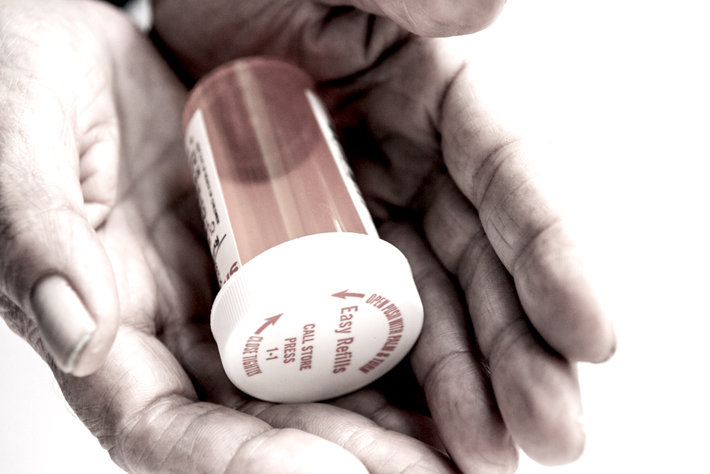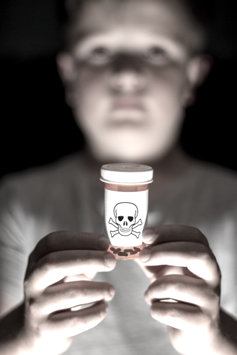The Importance of Taking Care of Our Health Without Falling Prey to Overmedication

We live in a very peculiar, very unique time in society right now. Let’s look at this. In the United States, our medicine and our approaches to health are more incredibly advanced than they have ever been in our history. Yet in that same token, the problems that we face and the threats to our health are also possibly more severe than they have been in many decades. And at the end of the day, the American people do not have nearly as high of a health ranking as they should, given our technology and medical prowess. Why is this?
Our Medicine is not Always Good Medicine
A big factor is that the very health solutions that we often gravitate to are not, in fact, helpful to us. Take for example pharmaceutical drugs. The United States only comprises about five percent of the world population, yet we easily consume more than seventy-five percent of the world’s supply of pharmaceutical drugs, every year. America is overmedicated, but we do not have the significantly pleasant health ranking that we should have if the assumption was that our pharmaceutical drugs only ever helped and never hindered.
This is a mistake, to believe that all of our medicines are good medicines and that all of our medicines will produce a positive result in those who take them. In fact, quite the contrary is true. Many of our medicines have harmful effects.
Opioid Painkillers
Take prescription opioid pain relievers. While research from the American Medical Administration does indicate that one-third of all Americans struggle with some form of pain symptoms, whether acute or chronic, this does not mean that prescription opioid pain relievers are for everyone.

In fact, prescription opioid pain relievers are heavily overprescribed. Tens of millions of Americans are prescribed high-strength opioid pain reliever drugs for conditions that absolutely do not warrant such powerful drugs for their conditions. According to an independent survey, the top five sources of pain that doctors prescribe opioid painkillers for are back pain, cramps, neck pain, headaches, and mouth/jaw pain. But the problem is, painkillers are not even intended to treat those types of pain. Over-the-counter, non-opioid based pain relievers are usually more than sufficient to deal with such pain issues.
The truth is, opioid painkillers are only intended for serious pain issues, such as pain associated with cancer, pain that comes about from a serious accident, illness, disease, health condition, or medical emergency, or pain that comes about from one’s recovery from one of the above. Opioid painkillers are also immensely valuable when used in hospitals during operations, as they act as an anesthetic and allow surgeons and medical staff to operate on patients.
Psychiatric Medications
Psychiatric medications are another good example of pharmaceutical medicines that are not always helpful. In fact, psychotropic drugs might be even more controversial than opioid pain relievers are. Psychotropic (psychiatric) drugs are defined simply as any type of drug that deigns to address some kind of mental struggle, a “mental disorder” as they are so easily labeled. However, the science behind the brain’s connection to mental health is shoddy at best. It is a very new science, and it is full of holes and nuances that have yet to be fully researched. And whether the science is true or not, just the sheer side effects that come with psychiatric medications has to cause us to wonder if these drugs are really helpful or not.
Suicidal thoughts, crippling mental crisis, anxiety, depression, weight gain, weight loss, eating disorders, impotency, agitation, inability to focus, these are just a handful’s selection of the endless lists of negative side effects that come about from taking psychiatric drugs.
And the problem is, when patients start to experience negative side effects from psychiatric medications, their doctors or mental health experts try to put them on other medicines to counteract the side effects of the first medicine. But then those drugs create side effects too, and so begins the dwindling spiral of overmedication.
Expert Analysis
The U.S. Library of Medicine, a division of the National Institutes of Health, performed an incredible research project on the sudden increase in our use of pharmaceutical drugs to “solve” our problems for us. From that research paper:

“During the 1990s, an important shift in drug use patterns occurred in the U.S. Epidemiological data showed that greater numbers of people, especially young, college-aged adults, reported using a variety of pharmaceuticals for non-medical purposes. Although the category of non-medical use includes several distinct patterns, including self-medication for physical and emotional conditions and functional use directed at increasing individual academic performance, it is the recreational aspects of this practice that have generated a particular alarm in the public health literature as well as popular media.“
The report went on to say that:
“Theoretically, it is intriguing to view these increases in the recreational use of prescription drugs within the framework of ‘pharmaceuticalization,’ a process involving the translation or transformation of human conditions, capabilities, and capacities into opportunities for pharmaceutical intervention. These processes potentially extend far beyond the realms of the strictly medical, to encompass non-medical uses for lifestyle, augmentation or enhancement purposes amongst ’healthy’ people.”
Essentially, the study was able to prove that, as doctors began to prescribe pharmaceutical drugs to address both physical and medical conditions that Americans from previous generations would have handled differently, Americans also began using these drugs recreationally too. In just the span of a few years, America went from being a nation of holistic medicines and natural remedies for much of our ailments to a nation that relied heavily on pharmaceuticals just to help us “get by.”
The research project’s introduction statement concluded by saying that:
“Increases in the prescription rates of pain relievers and central nervous system stimulants were even more significant, rising by 94% and 327%, respectively, for those under 15 years of age…”
“The medication of young Americans increased significantly in the 1990s. For example, between 1985 and 1999, doctors’ visits involving prescriptions increased 29% for those under 15 years of age and 19% for those aged 15 to 24 years. Increases in the prescription rates of pain relievers and central nervous system stimulants were even more significant, rising by 94% and 327%, respectively, for those under 15 years of age.”
Medication trends increased, recreational use of pharmaceuticals increased, and before we knew it, we were a nation of five percent the world’s population consuming seventy-five percent the world’s supply of potentially addictive pharmaceutical drugs. What a change.
Walking the Fine Line
When we address our health, it is important that we take care to walk the fine line between the proper use of medicines to address critical health issues, all while also being cautious not to use too many medicines. Not all pharmaceuticals are harmful, but not all medicines are beneficial either.
The tricky prospect here is that the pharmaceutical industry is a massive, over-a-trillion-dollar-a-year industry. Pharmaceutical drug companies operate as corporations, first and foremost. They are businesses, and their incentive is to sell as many medications as possible, not to actually cure people of their medical conditions. This is one of the key problems in our medical and pharmaceutical industries. There is a lot more money to be made in treating symptoms than there is to be made in actually curing the cause of those symptoms. Because of that, we have to do our own research and be very cautious and selective with which pharmaceuticals we take and which we turn down.
Sources:
- https://www.ncbi.nlm.nih.gov/pmc/articles/PMC3888960/
- https://www.hhnmag.com/articles/7199-steps-for-hospitals-to-prevent-drug-abuse
- https://www.samhsa.gov/newsroom/press-announcements/200911051200


 ®
®